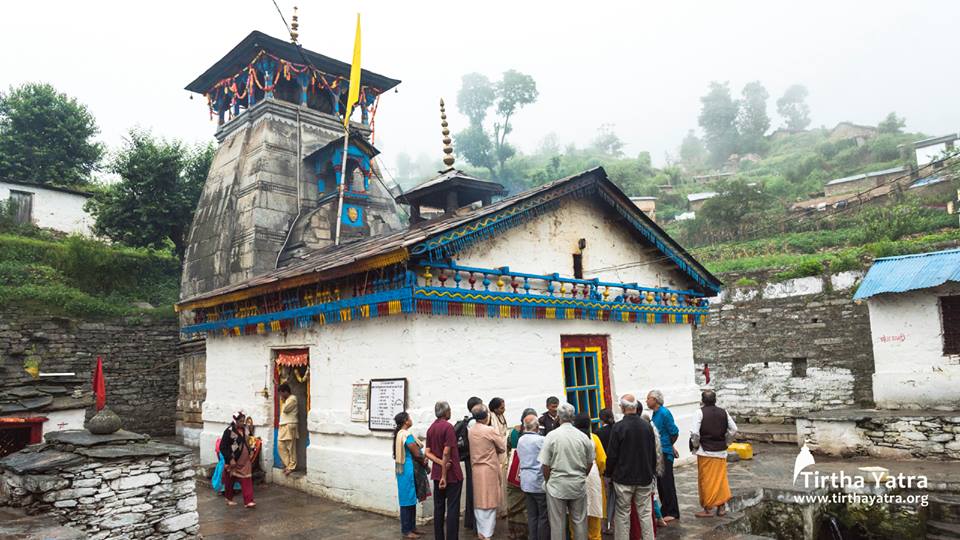
Triyugi Narayan Temple is dedicated to Lord Vishnu and located in the Triyuginarayan village, Rudraprayag district of Uttarakhand state in India. Overseeing the beautiful Kedar Valley and the Chaukhamba peaks, the Triyugi Narayan temple is situated in the most picturesque surroundings.
This glorious temple is the site of the birthplace of Lord Vamana, one of Lord Vishnu’s incarnations. Triyugi Narayan Temple is equally popular for being the sacred marriage site of Lord Shiva and Parvati Devi which was witnessed by Lord Vishnu as Parvati Devi’s brother and conducted by Lord Brahma.
The marriage fire lit during the marriage ceremony is still burning in the temple and called as Akhand Dhuni i.e. the eternal fire. Hence the temple is also called Akhand Dhuni Temple. Pilgrims offer wood into this fire when they visit the temple and collect the ashes as prasadam. The sacred Saraswati Kunda which originated from the navel of Lord Vishnu is also present here.
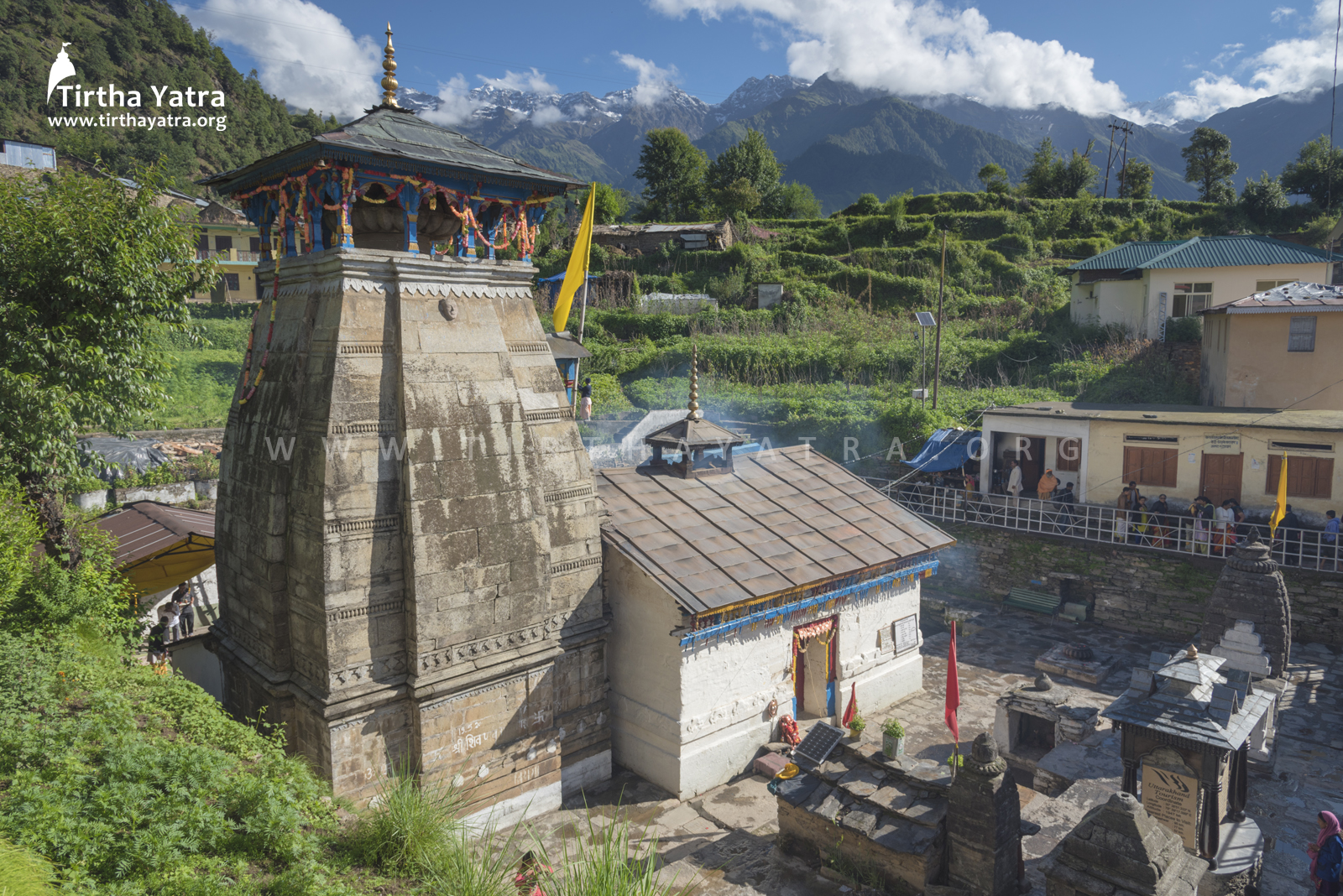
The origin of Triyugi Narayan Temple
mukti mukti dayini virakti mukti bodhini
paapa sangham nashini paratha paraam purathini
punya bhumi mathraam namami vishnukaa purim
The Kedar Khanda of Skanda Purana vividly describes the sacred spot where the Triyugi Narayan Temple is located, as follows:
Parvati Devi was Sati Devi in her previous life who had been Lord Shiva’s consort. Before she entered into the fire, being unable to bear the insult on Lord Shiva by her father Maharaja Daksha, Parvati Devi had asked Lord Vishnu for a boon that she would remain Lord Shiva’s consort in her next life as well as eternally. This boon was granted by Lord Vishnu.
Later, Sati Devi was reborn as the daughter of the King of Mountains, King Himavan and Queen Mena in today’s Triyuginarayan village. After the birth of Parvati Devi, Narada Muni was eager to have her darshan and hence, put on the attire of a brahmana and went to the court of King Himavan.
Narada Muni was well received by the King and the Queen who asked him to predict Parvati Devi’s future through the medium of astrology and palmistry. Narada Muni after looking at the hands of baby Parvati Devi said that Lord Shiva would be her husband. The lines on her hand were all pointing towards the same. Hence, the princess should only meditate on the holy names of Lord Shiva.
In the due course of time as Parvati Devi grew, she started worshiping Lord Shiva through penances and japa. One fine day, Parvati Devi decided to do severe penances to please Lord Shiva and hence, taking the permission of her father and mother left for the forest. As per the Shiva Purana, Parvati Devi had done severe penances for 70,000 years which pleased even the devatas.
Lord Shiva had tested her determination many times and each time she would come out victorious. Finally, being Impressed with Parvati Devi, Lord Shiva sent the Saptarishis to the palace of King Himavan with His proposal to marry Parvati Devi. King Himavan after receiving the Saptarishis well, gladly accepted the proposal and consulted Sri Gargacharya to find the suitable time and date to conduct Lord Shiva’s and Parvati Devi’s marriage.
The King sent the Saptarishis back to Lord Shiva with the proposed marriage time and date. At the same time, Parvati Devi was brought back to the palace of King Himavan from the place where she was engaged in penances.
King Himavan was eagerly involved in making the arrangements for his daughter’s wedding. He had given charge of many of the important wedding arrangements to the rishis, devatas, gandharvas and brahmanas. The celestial architect Sri Vishwakarma who had built Kailash, the abode of Lord Shiva left no stone unturned in making sure the city could accommodate all those attending the wedding ceremony as well as give the feeling of Vaikuntha.
The bridegroom entourage which included prominent personalities headed by Lord Vishnu arrived in King Himavan’s palace on the Monday of the Margashirsha month when the Moon was in the ascendant and the nakshatra i.e. moon sign was Rohini. The Jupiter planet headed by Brihaspati, the Guru of the Devatas and other planets were aligned together in an auspicious manner.
The entire entourage was welcomed heartily at the palace of King Himavan and thereafter accommodated as per the stature of each personality. Lord Brahma began the auspicious wedding ceremonies with Lord Vishnu being the witness. Sri Gargacharya along with the Saptarishis made arrangements for the necessary items required to perform the marriage ceremony of Lord Shiva.
They offered their respects to the Agni i.e. sacrificial fire called Dhananjaya who would be the witness to the marriage. When the sacrificial fire started burning properly, the marriage ceremony started under the directions of Sri Gargacharya.
With Lord Vishnu as the witness, Lord Shiva took his marriage vows along with Parvati Devi around the sacrificial fire. Lord Brahma ensured that all the traditional marriage customs were followed and completed. All the devatas being happy on this auspicious occasion started showering the divine couple with flowers.
All the yakshas, gandharvas, kinnaras, etc performed a variety of dances to please the new couple as well as the inhabitants of the Kingdom. Offering respects to all the guests, the divine couple were sent off to Mount Kailash, the abode of Lord Shiva.
The glories of the Akhand Dhuni – the eternal fire in Triyugi Narayan Temple
The Akhand Dhuni in Triyugi Narayan Temple has been burning since the time of the auspicious marriage ceremony of Lord Shiva and Parvati Devi. The sacred fire spot marks the place where the divine couple got married. King Himavan wanted to protect this sacred spot and thus engaged the Rishis, Sages, Priest, etc who kept the fire burning through the conduct of various yagnas, homas, etc. This went on well till the Dwapara-yuga.
With time, the influence of Kali-yuga brought down the intensity of the Dhananjaya fire. Wood from the Banyan tree were used to keep the flame burning. Regular homas have been done here using the same fire beginning from the Treta-yuga. The families of around 200 purohits in the Triyuginarayan village are engaged in keeping the flame burning. Each family selflessly serves the fire for three days in a rotation.
Apart from the families of the purohits, there are 24 other sevaks who help keep the flame burning by making arrangements for wood no matter what the season. Pilgrims to the Triyugi Narayan Temple also donate wood for the fire for their spiritual benefit. The main prasadam from the Triyugi Narayan Temple are the ashes generated from this fire. It is said that devotees feel peaceful and satisfied after applying the ashes on their foreheads.
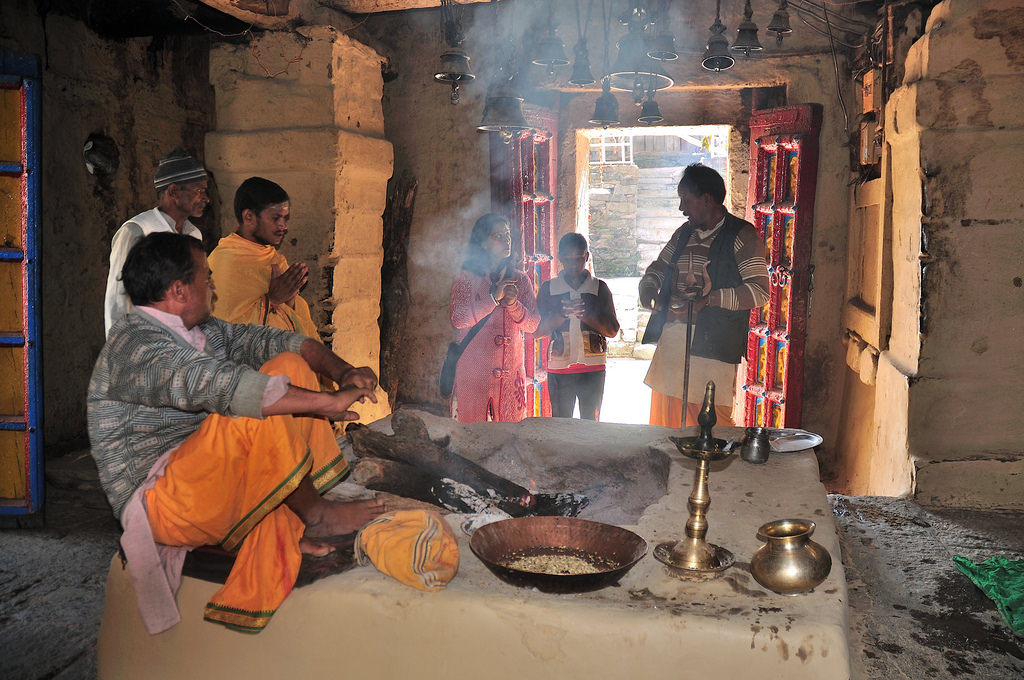
The origin of the name Triyugi
The name Triyugi prefixed to the name Narayana is attributed to three reasons. The first is the Triyuginarayan village being the birthplace of Lord Trivikrama. The second being that the name Triyugi is used to describe Lord Narayana only in the Srimad Bhagavatam.
The third reason is that King Himavan got the three Deities of Lord Narayana with Lakshmi Devi and Saraswati Devi on His either sides consecrated following the marriage of Lord Shiva and Parvati Devi. Lord Narayana was the witness in the marriage ceremony. Another reason given for the prefix Triyugi is that the Akhand Dhuni – the sacred marriage fire of Lord Shiva and Parvati Devi has been burning on for the last three yugas beginning with the Treta-yuga.
The overlay of the Triyugi Narayan Temple
The Triyugi Narayan Temple was originally built by the celestial architect Vishwakarma who was inspired to do so by King Himavan after the marriage of Lord Shiva and Parvati Devi. The temple was built assuming that the ocean of milk which is found in Vaikuntha was present there.
King Himavan had the Deities of Lakshmi Narayana, made of 108 Shaligramas and Saraswati Devi installed in the temple. The temple is constructed in the native Himalayan Architecture. Surrounding the main structure of Triyugi Narayan Temple are many kundas.
Dharmashila in Triyugi Narayana Temple
The Dharmashila is a stone slab where King Himavan did the pre-nuptial ceremonies of his daughter Parvati Devi and gave her in marriage to Lord Shiva. Worship is first offered to Lord Shiva and Parvati Devi before the darshan of Lakshmi Narayana at the temple. Beyond the Dharmashila lies a place where cows are kept.
It is said that King Himavan used to keep lakhs of cows here, worship them and distribute them to the brahmanas in charity. In the middle north of the temple lies the temple of Garuda deva where Lord Garuda is said to rest after taking Lord Narayana on a ride. This slab is located within the Triyugi Narayan Temple and devotees still wed here.
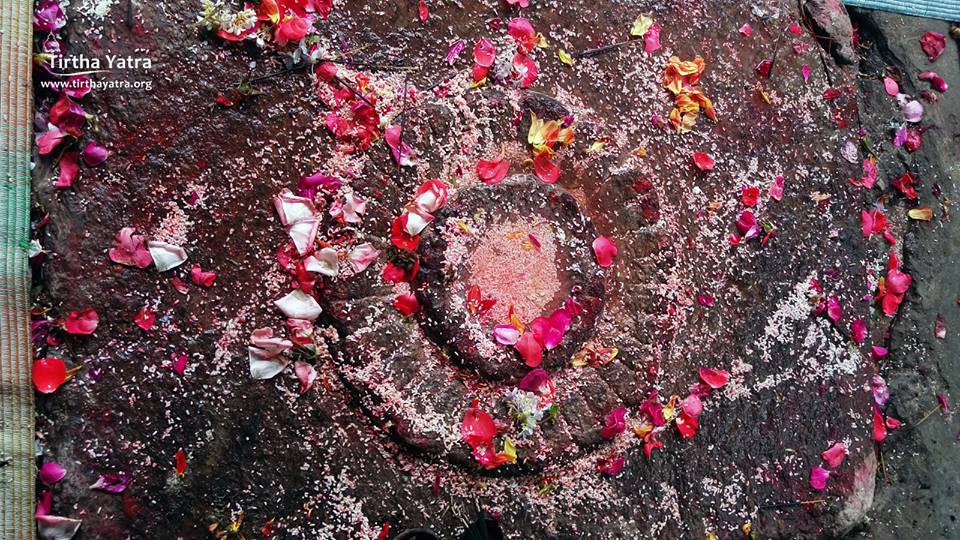
How to reach Triyugi Narayan Temple
The best way to travel to Triyugi Narayana Temple is to book your Char Dham Yatra with Tirtha Yatra. Without any hassles you can relish the beauty of Triyugi Narayan Temple.
1. By Road – To reach Triyugi Narayan Temple, you can take a taxi from Gupt Kashi or Sonprayag to reach the temple. Sonprayag and Gupt Kashi are well connected by road from Uttarkashi. Uttarkashi can be easily reached from Rishikesh / Haridwar / Dehradun.
2. By Flight – The nearest airport is the Jolly Grant airport in Dehradun which is 226 kilometers away.
6

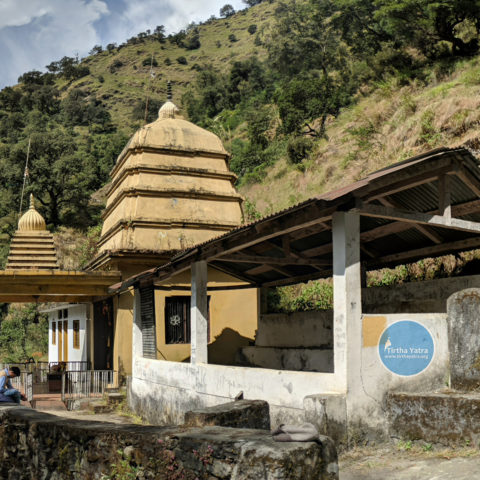
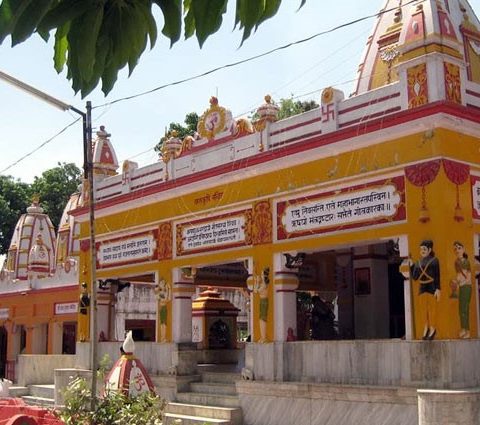
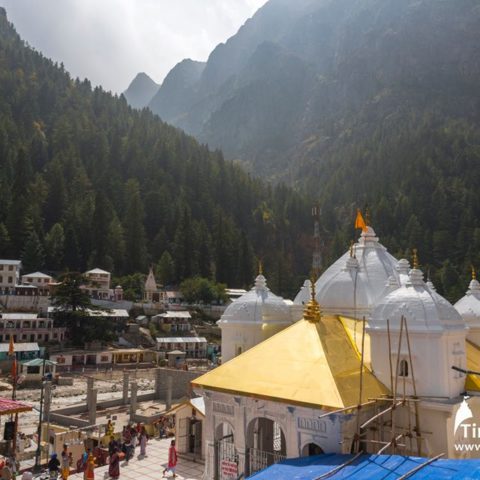










6 Comments On Triyugi Narayan Temple
Narayana Bhakthan nair
Thank you for the information. Trying my best to visit such places if I live for few more years.
Gajendra Singh
Har Har mahadev
Belavady Prasanna
Excellent description of Triyugi Narayan temple in Uttara Kashi. Wish you can organize the combined tour of Gangotri and Yamunotri when we can visit this temple.
Vasantha Sivaramakrishnan
Thank you guruji for giving very interesting information in rate temples Even when we cannot have personal direct dharashan we can be blessed by hearing about it
धन्यवाद
Raj
Nice information what is the idle time to visit this place next year can u send me the detailz
You can visit this temple all throughout the year except the rainy season.